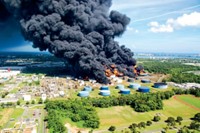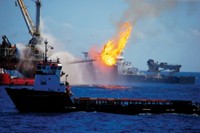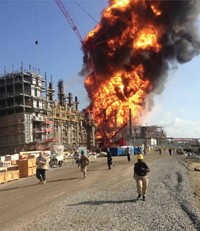Advertisement
Grab your lab coat. Let's get started
Welcome!
Welcome!
Create an account below to get 6 C&EN articles per month, receive newsletters and more - all free.
It seems this is your first time logging in online. Please enter the following information to continue.
As an ACS member you automatically get access to this site. All we need is few more details to create your reading experience.
Not you? Sign in with a different account.
Not you? Sign in with a different account.
ERROR 1
ERROR 1
ERROR 2
ERROR 2
ERROR 2
ERROR 2
ERROR 2
Password and Confirm password must match.
If you have an ACS member number, please enter it here so we can link this account to your membership. (optional)
ERROR 2
ACS values your privacy. By submitting your information, you are gaining access to C&EN and subscribing to our weekly newsletter. We use the information you provide to make your reading experience better, and we will never sell your data to third party members.
Safety
Two Plant Blasts Kill Three People
Chemical Accidents: Back-to-back chemical facility accidents on the Gulf Coast raise safety concerns
by Alexander H. Tullo , Jeff Johnson
June 20, 2013
| A version of this story appeared in
Volume 91, Issue 25

A day apart, two chemical plant accidents in Louisiana killed three workers and left many more injured. The incidents on June 13 and 14 raise worries that a rapidly growing number of petrochemical facility expansions over the next several years could lead to similar tragedies. The blasts also pile on to the investigatory burden of the already overtaxed Chemical Safety & Hazard Investigation Board (CSB).
The first explosion killed two workers at the Williams Cos. ethylene plant in Geismar on the morning of June 13. The cause is still unknown. While a massive fire raged, 300 workers were evacuated and 73 of them were taken to area hospitals.
At the CF Industries nitrogen fertilizer plant in Donaldsonville, 10 miles from the Williams facility, one worker was killed and seven were injured in the early evening of June 14 when a temporary distribution manifold ruptured during off-loading of nitrogen gas.
Both plants were undergoing extensive work when the accidents occurred. The CF explosion took place in an ammonia unit that was shut down for maintenance. And at Williams, a $400 million expansion was underway to increase ethylene capacity by 50%.
CSB is just beginning to examine what triggered the Williams accident, and investigators are unsure whether the expansion played a direct role, says Daniel M. Horowitz, the board’s managing director.
An examination of many of CSB’s 73 investigations finds that plant accidents frequently occur during process shutdowns, start-ups, and overhauls. For example, an explosion at Bayer CropScience’s Charleston, W.Va., plant killed two workers in August 2008 after the installation of new process control equipment. An accident at BP’s Texas City, Texas, refinery killed 15 workers in March 2005 during the start-up of an octane-boosting isomerization unit.
Transitions are always difficult at chemical plants, notes Daniel A. Crowl, a process safety expert and chemical engineering professor at Michigan Tech. They are an “opportunity for accidents,” he says, as new equipment is put into service and new procedures are added that are unfamiliar to operators.
Problems are unlikely if rigorous process safety management standards are followed, Crowl stresses.However, the flood of cheap natural gas feedstock from shale is leading to a potentially overwhelming boom in petrochemical plant construction and expansion in the U.S. “It can become a conflict in priorities for plant operators,” he notes.
In May, the American Chemistry Council, a chemical industry trade association, counted 97 planned expansions resulting from the feedstock boom, representing a total investment of $71.7 billion. The U.S. Gulf Coast will see most of the construction activity, and much of it may be done by contract workers unfamiliar with chemical safety procedures.
CSB’s Horowitz notes that the overall frequency of chemically related plant accidents appears to be growing and is stretching the board’s resources, which have remained flat for the past decade. The board is currently investigating 15 large accidents.
“It has been extremely difficult, verging on impossible, for us to start work on new accidents,” he says. In the Williams case, Sen. Barbara Boxer (D-Calif.), chair of the Senate committee that oversees the board, contacted CSB seeking updates as the investigation of the accident moves ahead. But “because of our caseload, there was nothing we could do on CF,” Horowitz notes. “We have investigators traveling all over the country doing investigation interviews.”





Join the conversation
Contact the reporter
Submit a Letter to the Editor for publication
Engage with us on Twitter